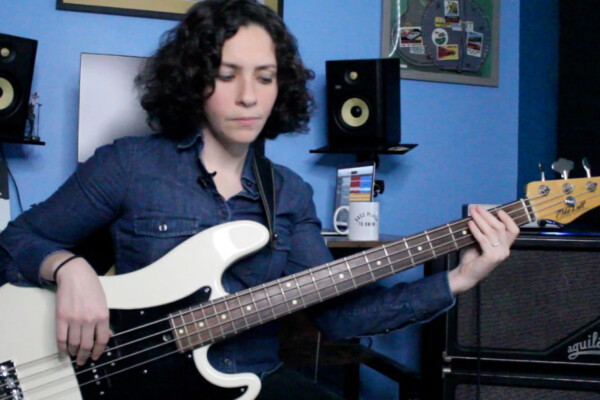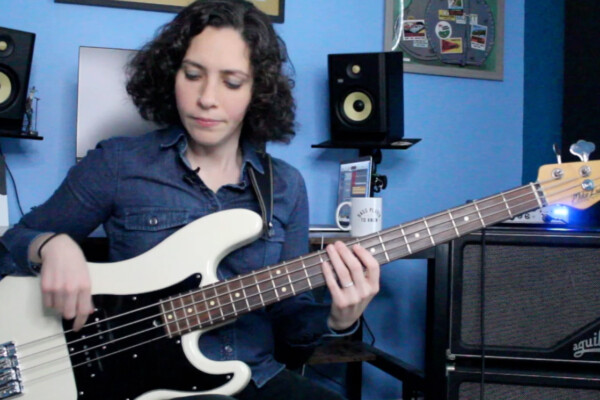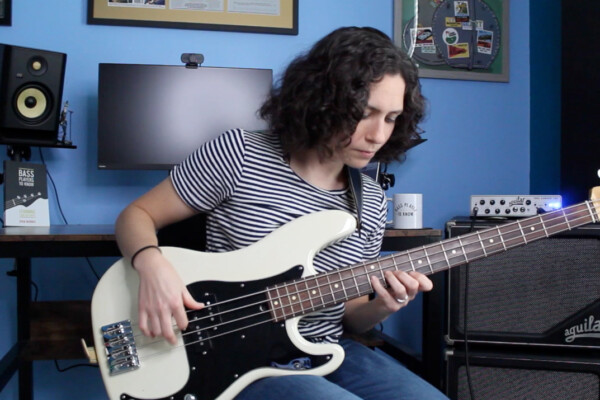Nailing The Bass Intro To “My Girl” By Palm Muting and Getting a Vintage Tone
In this lesson, we’ll learn how to keep it groovy by palm muting and using our thumb — a slightly different technique compared to standard finger-style playing. To practice this, we’ll play the distinctive intro part to “My Girl” by The Temptations.
Keep It Groovy: Learn The Bass Line To The Beatles’ “Eight Days A Week”
Today, Ryan Madora keeps it groovy by learning triads, following a chord progression, and applying a walking bass line by taking a page from Paul McCartney’s book and “Eight Days A Week.”
Keep It Groovy: Using Major and Minor Triads and Making Them Groove: 1-6-2-5 in the key of A
In this “Keep It Groovy” lesson, we take a look at combining our major and minor triad shapes to fit a key and chord progression. We’ll focus on the good ol’ 1-6-2-5 in the key of A.
Keep It Groovy: Learn Minor Triads and Make Them Groove (Key Of A)
In this “Keep It Groovy” lesson, we take a look at minor triad shapes on the bass and figure out how to transform them from an exercise to a groove.
Keep It Groovy: Learn Major Triads and Make Them Groove (Key Of A)
In this “Keep It Groovy” lesson, Ryan Madora takes a look at major triad shapes on the bass and figures out how to transform them from an exercise to a groove.
Keep It Groovy: Using Open Strings: How To Play A Slow Blues In C
Today’s “Keep It Groovy” lesson is all about versatility, understanding the fretboard, and integrating open strings. This one piggybacks off a previous lesson on playing a slow blues. This time, we’ll find the bass part in a different position.
Keep It Groovy: Integrating Concepts In Our Walking Bass Lines
In this “Keep It Groovy” lesson, Ryan Madora plays through a very common chord progression in jazz and pop, the 1-6-2-5 chord progression. We’ll learn how to integrate different concepts to begin building a walking bass line.
Keep It Groovy: How To Play An Easy Slow Blues In C
In this bass lesson, Ryan Madora keeps it groovy with a nice slow blues in the key of C. She focuses on an incredibly common bass pattern for a slow blues that can also be sped up and adapted to a blues shuffle.
Keep It Groovy: Minor Rumba Blues In A
This “Keep It Groovy” lesson is all about diversifying your blues repertoire. Ryan Madora shows us a rumba rhythm played in a minor key to create a different kind of groove.
Keep It Groovy: “Go Your Own Way” by Fleetwood Mac
In this “Keep It Groovy” lesson, Ryan Madora dissects the fantastic melodic bass line to “Go Your Own Way” by Fleetwood Mac. John McVie’s line perfectly outlines the chord progression and provides a nice contrast to the verses.
Keep It Groovy: G Major Scale Across Two Octaves
In today’s “Keep It Groovy” lesson, Ryan Madora goes over two popular major scale shapes and a great way to connect them to play over two octaves. Ryan focuses on what she calls the “4-fret span” and “5-fret span” shapes.
Keep It Groovy: Beginner Improvisation – What Do I Play In The Key Of A?
In this Keep It Groovy lesson, Ryan Madora explores tips and tricks for improvising a bass line. Working in the key of A, we’re settling on a particular chord progression and spending two bars on each chord.











